Congratulations! Today is your day. You're off to Great Places! You're off and away! - Dr. Seuss
Eh! It's rochrox here again for another very special issue of Eh: The Canada Column. On June 4, 5 and 6, I was on my class trip to Canada's capitol city, Ottawa. So this week, I'd like to take you all on a tour of this magnificent city. So hop on the tour bus, and let the adventure begin!
Hi everyone! I'm Rachel, and I'll be your tour guide for your tour of Ottawa. While we drive, let's get familiar with the geography of Ottawa. Ottawa is in Ontario, but do you know where in Ontario? Take a look at this map, and see if you can find Ottawa.
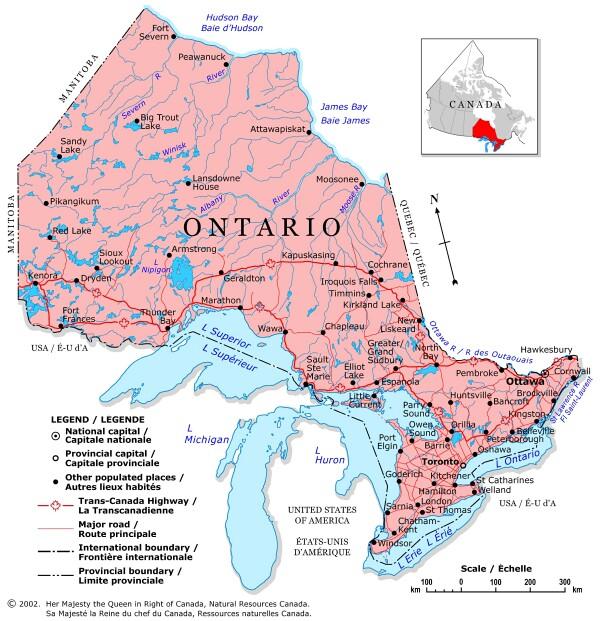
Could you find it? Did you notice anything special about Ottawa's location? Ottawa is located on the Ottawa River, which separates Ottawa from Gatineau, a city in Quebec. Also, Ottawa is located quite far inland. This is because when Canada first became a country, good defense was a necessity. Because Ottawa is further from the US border, it was easier to defend than a city like Toronto.
First stop, Fort Henry in Kingston! Fort Henry was originally built during the War of 1812. After the Rideau Canal was finished, they found it necessary to improve the structure of Fort Henry, so they rebuilt a second fort over top of the original site. This construction was around 1832 - 1837, and it is this version of the fort that we can visit today. If you look out your window to the left you'll see some of the soldiers having a marching practice now!
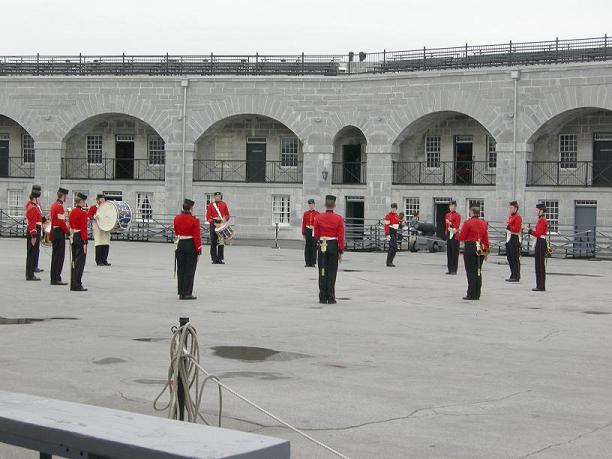
Hooray, we've arrived in Ottawa! Up ahead you can see the Canadian flag flying above the Peace Tower. If you were to see the flag close up, you'd find it is the size of a canoe! Have you guessed what famous buildings we're pulling up to? It's the Parliament Buildings! The present day Parliament buildings aren't the originals from 1867 (when Confederation happened). This is because in 1916 a fire destroyed Centre Block, leaving only the library unharmed. Do you know why? We'll find out later when we visit the library. Parliament Hill is one of my favourite places in Ottawa. On a sunny day, you'll see lots of people just hanging out, reading, and throwing Frisbee's. I think it's pretty cool that people like us can enjoy such important buildings.
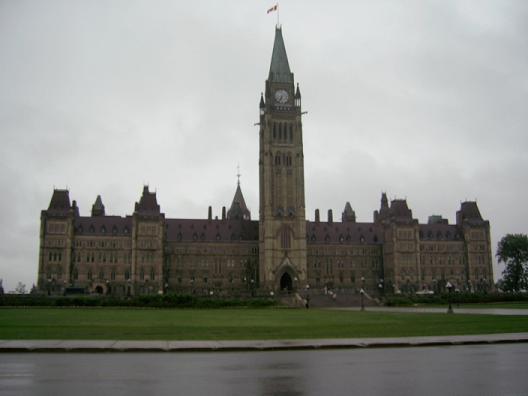
How about we take a look in the library now? Remember how I told you about the fire that didn't burn down the library? This is because of the library's doors! There were some very smart people working on the architecture and design of the library, and one decided that, because the library was made of mostly wood, there should be steel doors on the entrance. This way, should a fire ever occur, the library would be saved. This is exactly what happened in 1916, and it is thanks to those steel doors that the original library of Parliament still stands today.
Let's continue walking through downtown Ottawa. Up ahead you'll a big church. This church is called Notre Dame, which means Our Lady in French. Have you ever heard of the movie, The Hunchback of Notre Dame? That church is located in Paris, France. There is another Notre Dame church located in Montreal, Quebec. Notre Dame in Ottawa was one of the first Catholic churches in the area. Because the Christian population was increasing, the church needed to be made bigger. But how could they expand the church, when people still wanted to attend mass? What they did was begin the building process over top of the existing church! After completing the renovation, the smaller, original church was removed, leaving the Notre Dame we see today. See that statue on the rooftop? An Italian artist, who came to Canada to participate in an art contest, carved it. Because he didn't win, the artist had no way of getting back to Italy, and no one in Canada spoke Italian at the time! To afford the ticket to get back home, he sold his statue to the Notre Dame church.
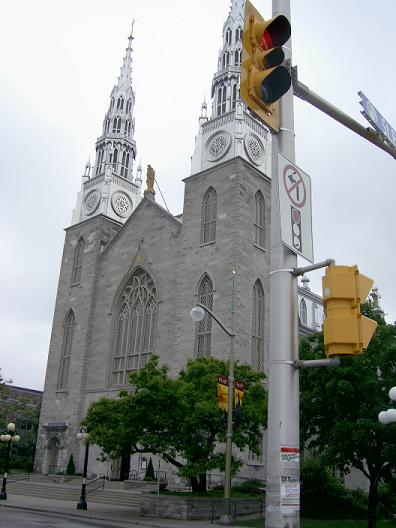
Up ahead you can see a big statue of a spider, right in front of the National Gallery of Canada. The gallery is famous for it's use of natural light. The architect of this building also built the old Ottawa City Hall. Now, back to the spider. Do you see the eggs she is protecting in her mouth? This spider's name is Maman, which means mom in English. She is said to be protecting and watching over the city of Ottawa.
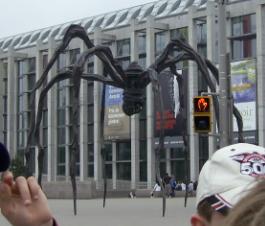
Right now we're entering Clarendon Court. It is here that a not-so-famous battle took place. As you walk through Ottawa you'll see that there is a lower part of the town, and a higher part of the town. This was known as Upper and Lower Ottawa. If you lived in Upper-town you were an Upper-towner, and if you were in Lower-town you were a Lower-towner. What was happening is the Lower-tower's were getting really mad at the Upper-towners, because the Upper-towners were too controlling, and not letting them own land. So, the Lower-towners revolted. They both came into Clarendon Court, and the Lower-towners started throwing rocks at the Upper-towners. Finally, one of the Lower-towners threw a rock, and hit a poor, innocent man in the head. He was just walking through the court to get a drink at the tavern, but he ended up dead. Now, people say that if you walk through Clarendon Court at night, you can still hear his ghost, walking through the court, looking to get the drink he never got.
Well, that concludes our tour of downtown Ottawa. I hope you enjoyed yourselves, and took lots of pictures ;)
Ottawa is my favorite city, and my favorite place in the world (so far). I hope you all get the chance to visit there some day.
--rochrox